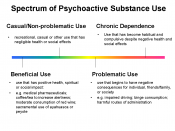The research presented by Gregg Halemba was conducted in four sites. Pima and Maricopa Counties were the focus and the research analyzed data from fiscal year 2002, which was gathered through the JOLTS (juvenile justice database) and the CHILD (CPS database) in addition to the review of case files by researches. The research findings confirmed that dependent youth on probation began their delinquent careers approximately one year sooner than those who did not have a history with the dependency system. Thus, resulting in being dually adjudicated into court systems that generally do not communicate with one another and may be counteracting what one another is trying to do. Additionally, the study found that dependent children spend more time on probation, experience frequent placement changes, poor outcomes of placement/probation, permanency outcomes at dependency petition closures are poor, and are in court frequently. Judge Escher and Pima County have established an effective multi-disciplinary team to tackle the issues identified by the research in an effort to improve the system, its outcomes, and better serve the youth involved in both systems by utilizing a four-area approach once a juvenile is identified.
This was done due to their progressive thinking and their ability to apply the research conducted in their jurisdiction in an effort to improve their system.
Recidivism is a factor that is frequently utilized to measure the effectiveness of interventions across systems. The research clearly illustrates that dually adjudicated youth are twice as likely to recidivate if referred for the first time on a delinquency charge. Also, 70% of dually adjudicated youth were unsuccessfully terminated from their probation. Based on case file reviews, a myriad of problems/needs were identified in juveniles involved in both systems. Not surprisingly, substance abuse and truancy issues were predominant amongst this population; followed by emotional/mental health issues and being on prescribed psychotropic medications. Additionally, family issues were identified through the case file reviews and the predominant family issue identified was parent alcohol and/or drug use followed by history of domestic violence. Obvious correlations exist between the juvenile and family needs identified in the case file reviews and that is substance abuse is at the heart of the majority of problems identified. Dually adjudicated females had a prevalence of problems/needs in the areas of substance abuse, suicidal ideations/attempts, history of being sexually abused, truancy, and academic deficiencies.
Pima County analyzed their local jurisdictions data, established the role and responsibility of the juvenile court in dependency and delinquency proceedings. They further established a collaborative comprised of stakeholders who have responsibility for the dually adjudicated juveniles and established the means of reporting and sharing data. The goal of their initiative is to divert youth from the juvenile justice system to community services providers. The goal is to cooperatively change processes not merely add resources to a broken system of care. A work group was identified and the goal is to reduce penetration into the systems, to identify alternative structures for case management for the dually adjudicated youth and family, and increase behavioral health participation.
FOUR areas were identified as needed to enhance the collaboration between the systems. Those four areas include: Screening and Assessment, Case Assignment, Case Flow Management, Case Planning and Supervision, and Interagency Collaboration. It is very evident that Pima County utilized the research generated in their jurisdiction to motivate systems to come together in an effort to improve communication, service delivery, and outcomes for the dually adjudicated population. This is obviously being accomplished through strong leadership and committed personnel within the various systems that touch the lives of these needy children who are seeking to be noticed, appreciated and helped to overcome the adversity in their lives.



